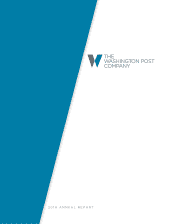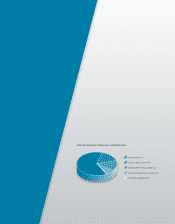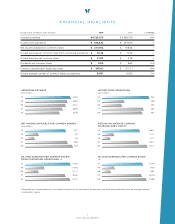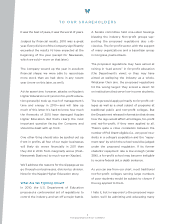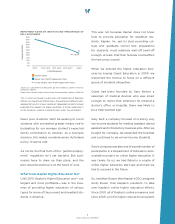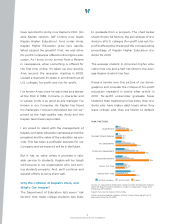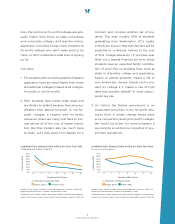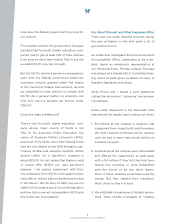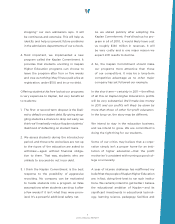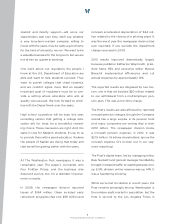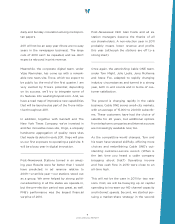Washington Post 2010 Annual Report Download - page 8
Download and view the complete annual report
Please find page 8 of the 2010 Washington Post annual report below. You can navigate through the pages in the report by either clicking on the pages listed below, or by using the keyword search tool below to find specific information within the annual report.
6
THE WASHINGTON POST COMPANY
How does the federal government fix prices for
our tuition?
For sensible reasons, the government long ago
decided that for-profit higher education com-
panies had to get at least 10% of their revenue
from sources other than federal Title IV aid, the
so-called 90/10 rule. Fair enough.
But the 90/10 rule has a perverse consequence:
each time the federal government raises the
maximum amount granted under Pell Grants
or the maximum federal loan amount, we end
up compelled to raise tuitions to comply with
90/10. (As a general matter, no university can
limit how much a student can borrow under
Title IV.)
Does this make a dierence?
There’s one for-profit higher education com-
pany whose major source of funds is not
Title IV. It’s American Public Education, the
owner of American Military University (AMU),
and most of its funds come from federal funds
that are not subject to the 90% limitation, par-
ticularly GI Bills and veterans’ benefits. AMU’s
annual tuition for a bachelor’s program is
about $7,500. I’m not saying that Kaplan could
or would oer $7,500 per year bachelor’s
degrees. I am saying: experiment with free-
ing companies from 90/10 on programs where
they oer to reduce tuitions and keep them low
in the future. I tell the story of AMU (we own no
stake in it) to make a point: for-profit education
and low tuition are not incompatible; 90/10 and
low tuition are incompatible.
Our Worst Moment and What Happened After
There was one really dreadful moment during
the year at Kaplan. In the end, quite a lot of
good came from it.
An undercover investigator from the Government
Accountability Oce, pretending to be a stu-
dent, taped an admissions representative at
our Pembroke Pines, Florida, campus. The tape
was played at a Senate HELP Committee hear-
ing, and it showed gross violations of many of
Kaplan’s standards and values.
Andy Rosen and I issued a joint statement
calling the misconduct “sickening” and promis-
ing changes.
Here’s what happened in the aftermath (this
was entirely the Kaplan team’s doing, not mine):
1. Enrollment at the campus in question was
suspended from August until mid-December.
We didn’t reopen enrollment at the campus
until we had a team that would deliver an
excellent program.
2. All students at the campus were interviewed
and oered the opportunity to walk away
with a full refund if they felt they had been
misled into enrolling, or were dissatisfied
with the school or for any other reason.
Most of these students could have used the
money. But they wanted their education.
Most chose to stay in school.
3. We instituted a broad array of student protec-
tions. These include a program of “mystery

